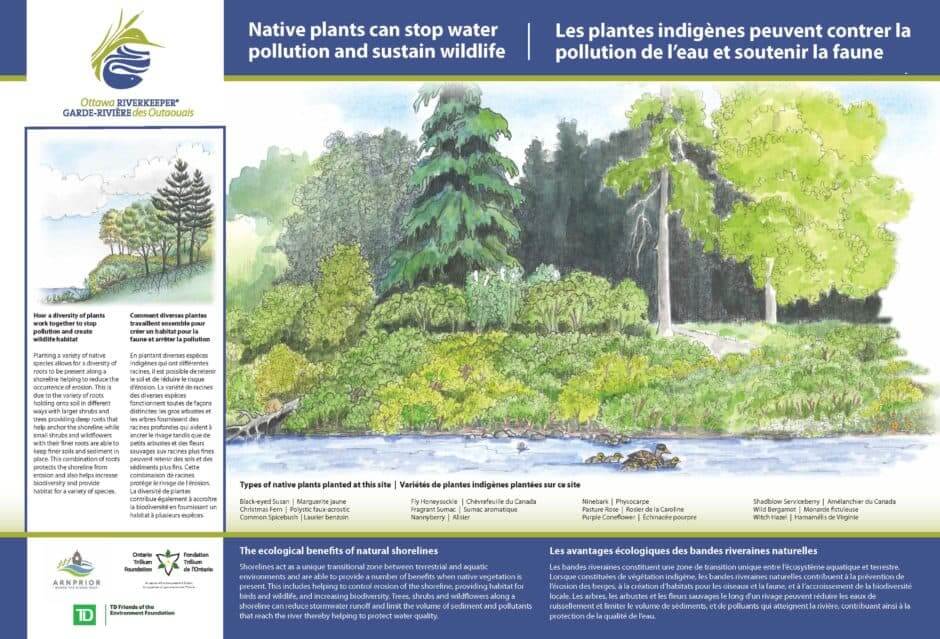Posted: August 26, 2019
Naturalizing Shorelines in Arnprior
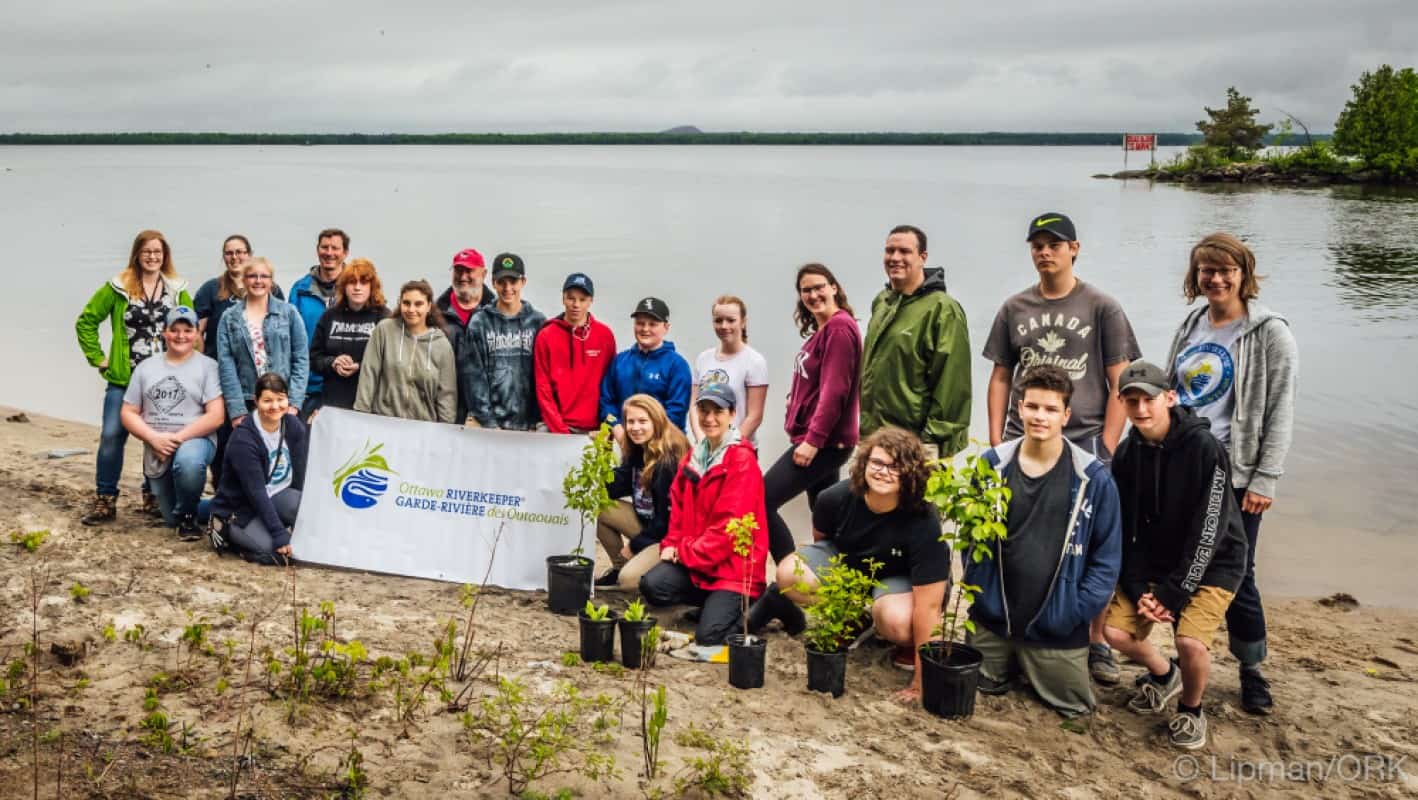
Ottawa Riverkeeper has organized shoreline naturalization projects to assist local communities in protecting their waterways. In the Spring of 2018, Ottawa Riverkeeper, Watersheds Canada, and 25 volunteers, including a number of highschool students, revegetated a site vulnerable to erosion at Arnprior, along the Ottawa River.
By Franny Varty, one of our Youth Water Leaders, and Cathy Rogers, one of our Riverwatchers.
Growing along a shoreline, native trees, shrubs, and flowers look beautiful throughout the year! In addition, native vegetation supports the health of the river. Shoreline plants provide food and habitat for shoreline animals, while protecting aquatic species and habitat by preventing shoreline erosion and re-deposition of eroded sediments in the river.
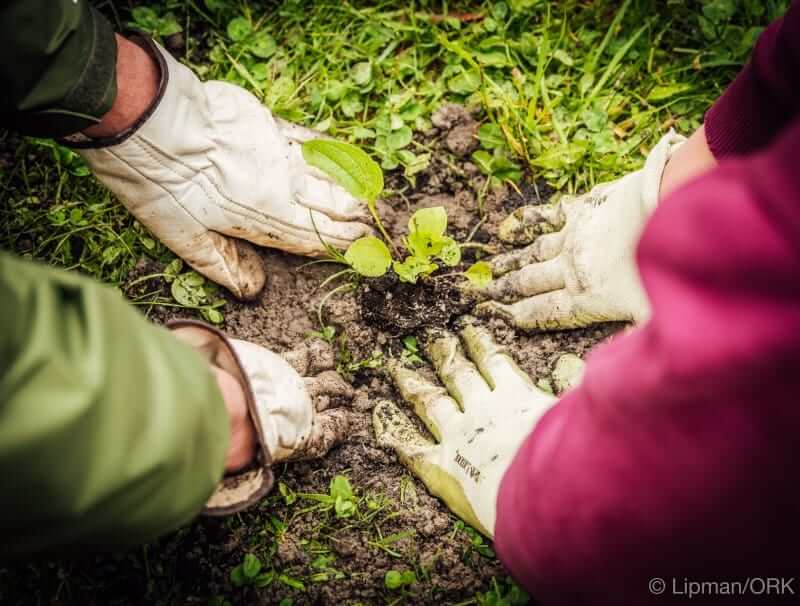
By eliminating natural vegetation, shoreline development threatens the health of rivers everywhere. Ottawa Riverkeeper has organized shoreline naturalization projects to assist local communities in protecting their waterways. In the Spring of 2018, Ottawa Riverkeeper, Watersheds Canada, and 25 volunteers, including a number of highschool students, revegetated a site vulnerable to erosion at Arnprior, along the Ottawa River. The site chosen is at the confluence of the Ottawa and Madawaska Rivers, close to important fish spawning habitat.
Choosing native plants of the right variety is incredibly important. Native plants are well suited to their environment so they thrive with little additional care. A variety of plants that have varying root lengths anchor the soil and keep finer sediments in place and also support biodiversity by providing food and habitat for birds, beneficial insects, and other animals With this in mind, 99 plants of 14 varieties were selected to rehabilitate the eroding site at Arnprior.
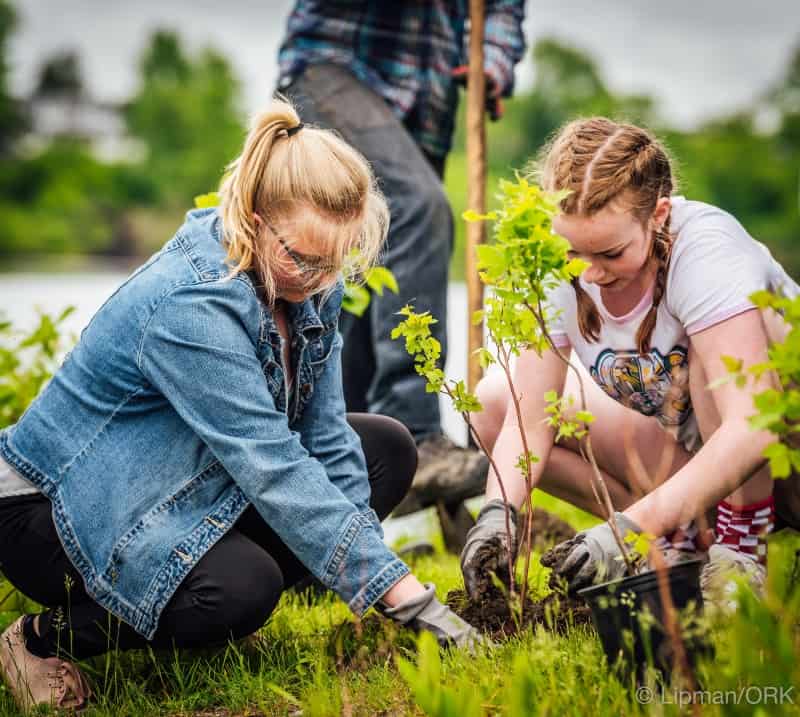
Different butterfly species gather to Fragrant Sumac’s citrusy aroma while its rapidly spreading roots stabilize shorelines. Berry-producing plants like the Nannyberry, Fly Honeysuckle, and Shadblow Serviceberry’s deeper roots anchor soil and appeal to many bird species. The Purple Coneflower’s beautiful blooms attract butterflies and hummingbirds. In the winter, its seeds provide necessary food to Goldfinches and other birds. The Common Spicebush’s fibrous roots use fungi to exchange nutrients, improving soil health and stabilizing shorelines. Its flowers’ lemony spice-y smell during the summer entices butterflies and provides essential habitat for swallowtail, silkmoth, and promethea moth larvae.
Naturalization projects improve biodiversity both on the land and in water. There are 85 fish species in the Ottawa River Watershed including Walleye, Sturgeon, American Eel, Muskellunge, and Small-mouthed Bass. The Madawaska River provides important spawning areas for some of these fish species. Planting the shoreline to reduce erosion of the riverbanks prevents eroded sediment from burying important fish spawning grounds and eggs. Reducing erosion of the riverbanks also prevents excess sediment from dislodging plants, invertebrates, and insects in the streambed and blocking sunlight from reaching river plants.
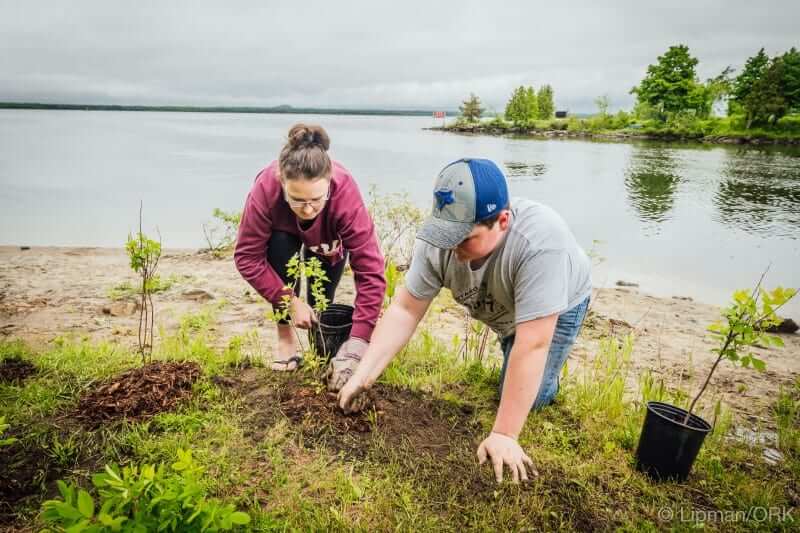
The number and variety of plants planted during this shoreline naturalization project will help reduce erosion and sedimentation at the selected site. In addition to protecting the shoreline, improving biodiversity, and providing habitat and food sources for local animals, this shoreline naturalization protects the fish spawning grounds close to Arnprior. Everyone is encouraged to visit the site to enjoy the beauty of the newly planted shoreline and watch for birds and butterflies who might also be enjoying the biodiversity too!
For more information on shoreline naturalization, view the sign below, or visit our blog post on a past project to get inspired!
Ottawa Riverkeeper would like to thank the volunteers who planted the site, the Town of Arnprior, the TD Friends of the Environment Foundation, and the Ontario Trillium Foundation for their support.
To learn more about naturalizing shorelines and the different plants planted at Arnprior, an interpretive sign will be installed at the site.
< Previous post Next post >
